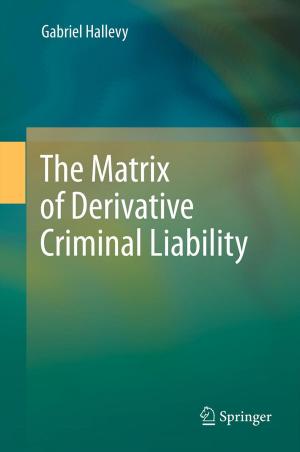Why We Punctuate
or Reason Versus Rule in the Use of Marks
Nonfiction, Reference & Language, Education & Teaching, Study Skills, Language Arts, Grammar, Reference| Author: | William Livingston Klein | ISBN: | 1230000275026 |
| Publisher: | THE LANCET PUBLISHING COMPANY | Publication: | October 19, 2014 |
| Imprint: | Language: | English |
| Author: | William Livingston Klein |
| ISBN: | 1230000275026 |
| Publisher: | THE LANCET PUBLISHING COMPANY |
| Publication: | October 19, 2014 |
| Imprint: | |
| Language: | English |
Example in this ebook
The first edition of this work was published in 1896, and the treatment of the subject was so highly commended by many leading men and periodicals of the country that the entire edition, though a large one, was soon exhausted. In spite of this favorable commendation, which may have been due to my effort to set forth reasons, instead of rules, for the use of marks, I had a keen sense of certain shortcomings in the work, and have long been unwilling to permit its reprinting or to undertake its rewriting. At least one of the reasons—and I hope the principal one—why the work fell short of my ideal of the book needed, was the inevitable failure inherent in the mode of treating the subject. As a sentence may contain the four principal marks (comma, semicolon, colon, and period) and, in addition, one or more of the other marks, a writer courts failure if, in treating the difficult art of punctuation, he deals with the marks separately, beginning, as all writers, myself included, have hitherto done, with the comma, the most difficult mark to understand, and proceeding, one at a time, with the other marks. Failure follows this mode of treatment because it disregards the interrelation of marks and the relations between groups of words to be interpreted by marks.
In this edition, which has been entirely rewritten, I have endeavored to avoid the fault of such mode ofvi treatment, and have dealt, from the outset, with groups of interrelated marks, exhibiting, for instance, in a single illustrative sentence (No. 6) the four principal marks in their interrelation as affected by the sense relations of the language of the sentence. I believe that this treatment of the subject of punctuation is the only logical one; and because of the lack of a logical treatment of the subject it is no exaggeration to say that almost utter chaos as regards punctuation which is helpful to both reader and writer, exists everywhere, inside and outside of printing-offices.
In the preface of the first edition I said it was a remarkable fact that the subject of punctuation had been very inadequately treated, as evidenced by the existence at that time of only a single treatise on punctuation in the English language, and by the total absence of any consideration of it in periodical literature. This assertion, with slight modification, is true today. An admirable essay by Mr. Phillips Garrison, sometime editor of The Nation, appeared in the Atlantic Monthly for August, 1906. This essay, which deals with the interchangeability of marks, only confounds the confusion of punctuation. Mr. Garrison admits that the more the difficulties of the art of punctuation are faced and considered, the fuller becomes our understanding of the principles which do underlie the convention that makes punctuation correct or faulty. One of his illustrative examples exhibiting the interchangeability of three marks, is discussed herein; and an effort is made to discover the “principles” that determine the correct punctuaviition of the example, and to show that the marks used by him are not interchangeable. No other article on punctuation is found in the world’s great mass of periodical literature listed in American library Indexes.
The one treatise referred to above is the work of Mr. John Wilson, which, it may safely be asserted, is the only treatise on the subject in English. It is a masterful work, exhibiting an amount of research and a degree of acumen probably unexcelled in the preparation of a text-book on any subject. In spite of this fact, I think the work is so minute, so voluminous, and so lacking in scientific generalization, as to make mastery of its great number of rules, with “remarks” and exceptions equivalent to rules, an exceedingly difficult and, to many, an impossible task. Mr. Wilson’s work was first published in 1826.
To be continue in this ebook...............................................................................................................
Example in this ebook
The first edition of this work was published in 1896, and the treatment of the subject was so highly commended by many leading men and periodicals of the country that the entire edition, though a large one, was soon exhausted. In spite of this favorable commendation, which may have been due to my effort to set forth reasons, instead of rules, for the use of marks, I had a keen sense of certain shortcomings in the work, and have long been unwilling to permit its reprinting or to undertake its rewriting. At least one of the reasons—and I hope the principal one—why the work fell short of my ideal of the book needed, was the inevitable failure inherent in the mode of treating the subject. As a sentence may contain the four principal marks (comma, semicolon, colon, and period) and, in addition, one or more of the other marks, a writer courts failure if, in treating the difficult art of punctuation, he deals with the marks separately, beginning, as all writers, myself included, have hitherto done, with the comma, the most difficult mark to understand, and proceeding, one at a time, with the other marks. Failure follows this mode of treatment because it disregards the interrelation of marks and the relations between groups of words to be interpreted by marks.
In this edition, which has been entirely rewritten, I have endeavored to avoid the fault of such mode ofvi treatment, and have dealt, from the outset, with groups of interrelated marks, exhibiting, for instance, in a single illustrative sentence (No. 6) the four principal marks in their interrelation as affected by the sense relations of the language of the sentence. I believe that this treatment of the subject of punctuation is the only logical one; and because of the lack of a logical treatment of the subject it is no exaggeration to say that almost utter chaos as regards punctuation which is helpful to both reader and writer, exists everywhere, inside and outside of printing-offices.
In the preface of the first edition I said it was a remarkable fact that the subject of punctuation had been very inadequately treated, as evidenced by the existence at that time of only a single treatise on punctuation in the English language, and by the total absence of any consideration of it in periodical literature. This assertion, with slight modification, is true today. An admirable essay by Mr. Phillips Garrison, sometime editor of The Nation, appeared in the Atlantic Monthly for August, 1906. This essay, which deals with the interchangeability of marks, only confounds the confusion of punctuation. Mr. Garrison admits that the more the difficulties of the art of punctuation are faced and considered, the fuller becomes our understanding of the principles which do underlie the convention that makes punctuation correct or faulty. One of his illustrative examples exhibiting the interchangeability of three marks, is discussed herein; and an effort is made to discover the “principles” that determine the correct punctuaviition of the example, and to show that the marks used by him are not interchangeable. No other article on punctuation is found in the world’s great mass of periodical literature listed in American library Indexes.
The one treatise referred to above is the work of Mr. John Wilson, which, it may safely be asserted, is the only treatise on the subject in English. It is a masterful work, exhibiting an amount of research and a degree of acumen probably unexcelled in the preparation of a text-book on any subject. In spite of this fact, I think the work is so minute, so voluminous, and so lacking in scientific generalization, as to make mastery of its great number of rules, with “remarks” and exceptions equivalent to rules, an exceedingly difficult and, to many, an impossible task. Mr. Wilson’s work was first published in 1826.
To be continue in this ebook...............................................................................................................















